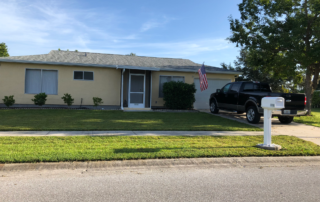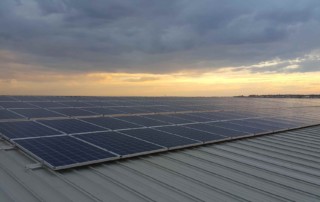Venice enjoys a balmy sub-tropical climate – but the weather we love can also result in some challenges when it comes to home and roof maintenance. The combination of hot temperatures, high humidity and frequent rain can cause mold and algae to grow more readily. To combat this growth, we Floridians need to apply a little elbow grease and diligence in order to have a more algae-resistant roof surface.
While algae and mold are generally not harmful to have on your roof, they do create ugly black and dark green patches and streaks. This can make your roof appear old or in disrepair – and eventually, may cause erosion of your roofing materials. Homeowners interested in keeping their home looking its best may find the presence of algae on the roof to be unacceptable.
Algae and mold grow in hot, moist conditions. The growth can be further accelerated if portions of the roof are frequently shady (not exposed to sunlight), or if there is standing water on your roof. Here are some frequently asked questions about why algae grows, how to clean it off your roof, and how to avoid it in the first place.
Note: Although growth can occur on tile roofing, most clay tile will prove to be algae-resistant. Asphalt shingles are far more susceptible to algae and mold.
Working Towards an Algae-Resistant Roof
What can I do to discourage algae growth? Algae grows if the shingles or tiles remain damp. Algae growth also often begins when spores from nearby trees and plants fly up onto the roof and find a shady, moist portion of the roof in which to grow. Keeping trees trimmed back off of the roof helps both in minimizing spores and allowing the sunlight to warm up and dry off the roof. If you are dealing with frequent bouts of algae or mold, you may wish to conduct a roof inspection to determine areas in which water is gathering, or to determine why tiles are not drying off. We can’t avoid the frequent rain in Venice, but we can help our roof to shed water more efficiently.
How can I clean algae off my roof? Usually algae and mold can be washed off using a low setting on a power washer and plain water. More stubborn stains can be cleaned with bleach, but homeowners should be aware that the bleach may also damage the home’s siding, as well as the plants and flowers along your home. Bleach and other strong, chemical cleaners can also make pets sick, so if water is not working, you may wish to contact a local roofing contractor who can safely clean your roof. Here’s a Hint: Power washers can strip the coating off of asphalt shingle tiles if the stream is too strong, so be sure to utilize a lower setting, or to ask a professional for assistance. We don’t want to see you damaging your roofing materials while attempting to keep them clean.
Are any roofing materials algae-resistant? Some of the latest innovations in roofing materials have helped homeowners to protect their roof by installing algae-resistant roofing from the beginning. If you are in need of a new roof installation, ask about metal-infused asphalt shingle tiles. These tiles include copper, which will kill algae upon contact. You can also affix copper strips to problem areas of your roof. Always use extreme caution when working on your roof. We always recommend that you call a licensed and insured roofing contractor to work on your roof, both for safety and to protect your roof warranties.
At [company_name], we are committed to making sure that you not only have a safe and strong roof – but a beautiful roof. If you have either structural or aesthetic concerns about your Venice roof, give us a call today.




